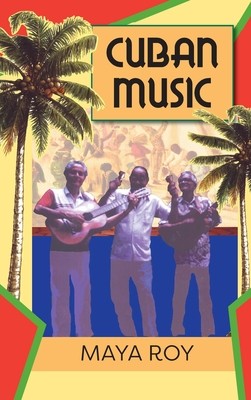
- We will send in 10–14 business days.
- Author: Maya Roy
- Publisher: Markus Wiener Publishers
- Year: 2002
- Pages: 258
- ISBN-10: 1558762817
- ISBN-13: 9781558762817
- Format: 15.9 x 23.9 x 2.4 cm, kieti viršeliai
- Language: English
- SAVE -10% with code: EXTRA
Reviews
Description
Native Americans supplied the maracas. African slaves brought drums and ritual music, and Spaniards brought guitars, brass instruments, and clarinets along with European ballroom dancing. The advent of blues and jazz gave new forms to styles of songs, notably feeling songs, which joined the more traditional styles of trova and bolero.
Cuban culture represents a convergence of these diverse backgrounds, and the musical heritage presented in this book reflects these traditions as well. In colonial times, African ritual sounds mixed with Catholic liturgies and brass bands of the Spanish military academies. Ballroom dances, including French music from Haiti popular in 18th-century Havana society, existed side by side with the cabildos (guilds and carnival clubs) and the plantations. The son, considered the expression of Cuban musical identity, had its origins in a rural setting in which African slaves and small farmers from Andalusia worked and played music together, developing many variations over the years, including big band music.
Cuban music is now experiencing a major renaissance, and is enjoyed throughout the world.
EXTRA 10 % discount with code: EXTRA
The promotion ends in 22d.13:06:52
The discount code is valid when purchasing from 10 €. Discounts do not stack.
- Author: Maya Roy
- Publisher: Markus Wiener Publishers
- Year: 2002
- Pages: 258
- ISBN-10: 1558762817
- ISBN-13: 9781558762817
- Format: 15.9 x 23.9 x 2.4 cm, kieti viršeliai
- Language: English English
Native Americans supplied the maracas. African slaves brought drums and ritual music, and Spaniards brought guitars, brass instruments, and clarinets along with European ballroom dancing. The advent of blues and jazz gave new forms to styles of songs, notably feeling songs, which joined the more traditional styles of trova and bolero.
Cuban culture represents a convergence of these diverse backgrounds, and the musical heritage presented in this book reflects these traditions as well. In colonial times, African ritual sounds mixed with Catholic liturgies and brass bands of the Spanish military academies. Ballroom dances, including French music from Haiti popular in 18th-century Havana society, existed side by side with the cabildos (guilds and carnival clubs) and the plantations. The son, considered the expression of Cuban musical identity, had its origins in a rural setting in which African slaves and small farmers from Andalusia worked and played music together, developing many variations over the years, including big band music.
Cuban music is now experiencing a major renaissance, and is enjoyed throughout the world.


Reviews